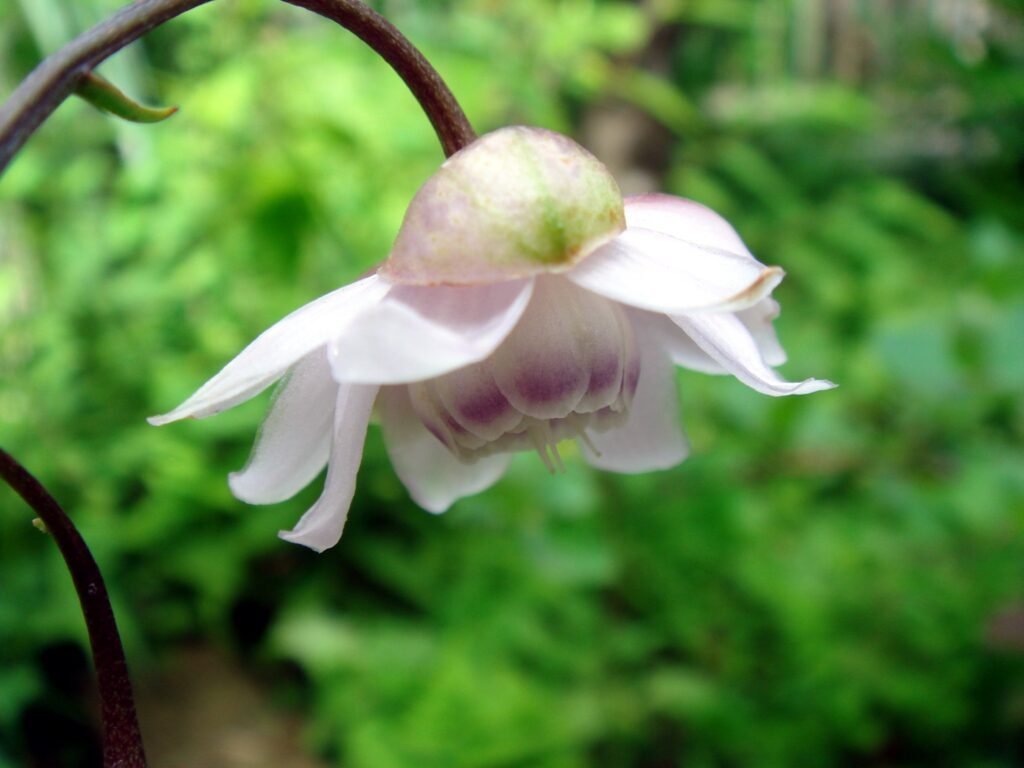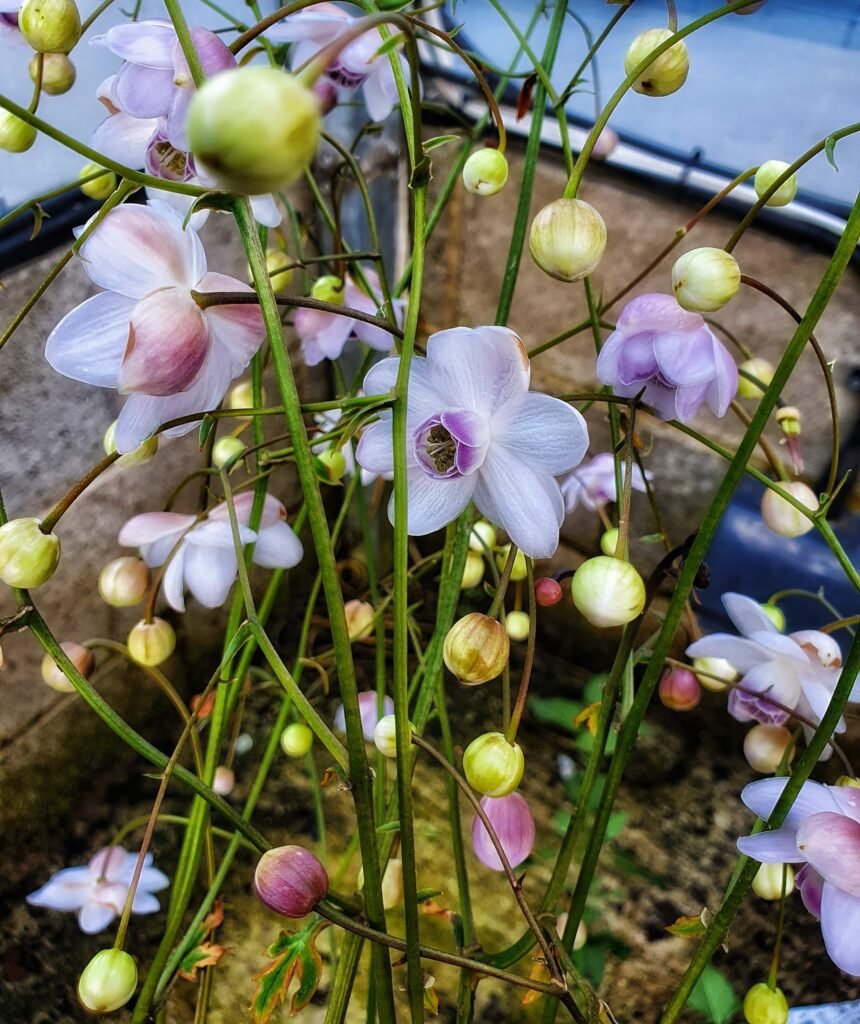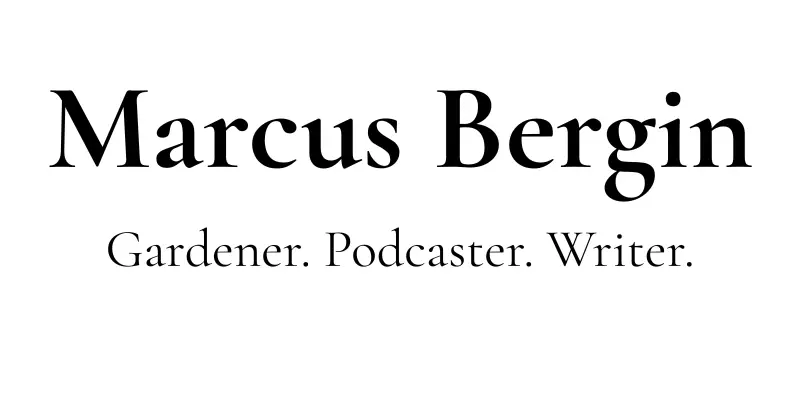
The Woodland Enchantress: Growing Anemonopsis in the Shade Garden
There are some plants that shout for attention—big leaves, loud colours, standing proud and tall. And then there are those that simply appear, quiet as a breath, and steal your heart without trying.
Anemonopsis macrophylla is firmly in the second camp.
I still remember the first time I saw one. It was in a cool woodland garden, the sort where the light filters through a canopy of beech and maple like green gauze. I was halfway down a winding path when I spotted it—an elegant spray of pale lavender blooms, each flower hanging like a miniature dancer mid-twirl. Not bold, not brash, but wholly captivating. I didn’t say anything. I just stood still and watched.
And I’ve been quietly obsessed ever since.
What Is Anemonopsis?
Anemonopsis macrophylla is a rare perennial native to the mountain woodlands of Japan. Though it’s scarcely known in many Western gardens, it has a cult following among shade gardeners—and for good reason.
In midsummer, while many shade plants are past their spring best, Anemonopsis comes into bloom. Its nodding, bell-like flowers are soft lavender with a frilly white centre, each held aloft on slender, wiry stems above a rosette of fresh green foliage. The flowers hover and move with the lightest breeze, giving them a dreamlike, floating quality.
It’s not a showstopper in the conventional sense—but it doesn’t need to be. Anemonopsis is a plant that rewards quiet observation, patience, and a love of woodland gardens.
How to Grow Anemonopsis
Despite its delicate looks, Anemonopsis isn’t impossibly fussy. It just needs a few specific conditions to thrive:
Shade and Shelter: Choose a site with dappled or partial shade—ideal beneath deciduous trees where it gets morning light and afternoon protection.
Cool and Moist Soil: It prefers rich, humus-laden soil that holds moisture but drains well. Avoid soggy spots, but don’t let it dry out either.
Shelter from Wind: Its tall, wiry stems are graceful, but can be vulnerable in exposed locations. A sheltered spot helps preserve the plant’s elegance.
It grows well in USDA Zones 5 to 7, and while it may cope in cooler parts of Zone 8, warmer climates make it struggle—especially if summer heat and humidity are high.

Patience Pays Off
Anemonopsis is slow to get going. In fact, it’s often years before a young plant will produce its first flowers. But gardeners who give it time are rewarded with something truly special. Once settled, it forms a gentle clump that returns year after year, looking almost unchanged by time—like a quiet spirit in the shade.
It’s also not especially easy to find. Few nurseries stock it, and seed-grown plants take time. If you’re keen to grow your own:
Start with a potted plant from a specialist nursery if possible.
Grow from seed only if you’re happy to wait—it may take three or more years to flower.
Mulch annually with compost or leaf mould to keep the roots cool and moist.
Where It Belongs
In the garden, Anemonopsis pairs beautifully with other refined shade-lovers—ferns, actaea, tricyrtis, and epimediums come to mind. It looks especially lovely beside mossy rocks, along woodland paths, or near a quiet bench where you might stop and notice it.
This isn’t a plant for impact planting or big borders. It’s one for a quiet corner—a shady nook where a little magic can take root.
A Plant to Know, A Plant to Love
Not every plant needs to perform. Some just need to exist—to be seen once, and remembered forever.
If you’re seeking something rare, graceful, and entirely out of the ordinary for your shady space, Anemonopsis macrophylla may be your perfect companion.
If you’re a gardener—whether you’re deep into shade, just getting started, or gardening in a little village plot—I’d love to invite you to join the community. You’ll find us chatting daily in the Shade Gardening Group, the Gardening with Marcus Group, and the local Bishops Cleeve Gardeners Group.
And if you fancy something a bit quieter, where you can settle in with a cuppa, I send out a gentle weekly letter called Dappled Thoughts. It’s full of seasonal musings, extra tips, and the kind of gardening reflections that don’t always fit on Facebook.
You can sign up here if you’d like to receive it.
Happy Gardening.
